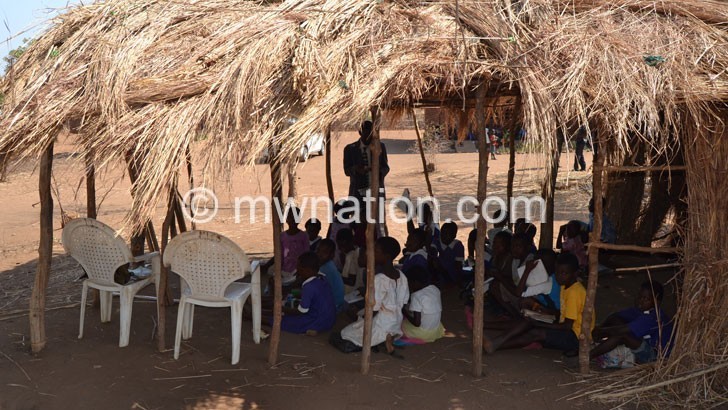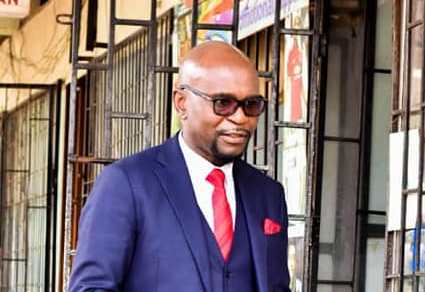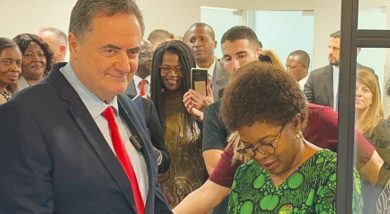Education Paralysed
Malawi’s education system is dogged with a plethora of problems, including inadequate learning and teaching materials as well as shortage of qualified teachers, a report has shown.
Education activists Benedicto Kondowe of Civil Society Education Coalition (Csec) and Steve Sharra of African Institute for Development Policy have lamented the situation, observing that little attention is paid to the sector which anchors any country’s development.
The 2017/18 Annual Statistical Report on Education, which provides timely and reliable information on education related indicators, among other things, highlights that the sector is faced with infrastructural challenges with 55 882 teachers having no institutional houses, classes conducted in open spaces and 3.7 percent of schools lacking access to safe water.

The report further points out that teaching and learning materials are inadequate, some teachers have a Junior Certificate of Education (JCE), 80 percent of the schools are not visited by inspectors, 30.8 percent of schools are inaccessible during rainy season and about 22 069 learners dropped out.
According to the report, enrolment increased from 4 603 941 in 2014 to 5 187 917 in 2018, representing a 11.1 percent growth in five years, but the total enrolment has been growing at an annual rate of 2.7 percent.
While 6 878 classrooms were completed in the 2017/18 school year, the report indicates that they are currently not being used and no reason has been given for this.
Reads in part the report: “The performance of students in primary schools is greatly affected by the quality of the teaching force. Though currently the ministry’s policy is only to recruit teachers with MSCE [Malawi School Certificate of Education], the system still has teachers with Junior Certificate.”
Worse still, 75 percent of the primary schools in Malawi, according to the report, have no power while 15.7 percent use Electricity Supply
Corporation of Malawi (Escom) power followed by 8.8 percent with solar power.
On access to schools, the report shows that a large number of schools are less than five kilometres apart, but 30.8 percent are not accessible during the rainy season with Neno, Chikwawa and Thyolo topping.
“The number of classrooms increased from 36 682 in 2014 to 42 896 in 2018, representing a growth rate of 17 percent. The number of permanent classrooms grew at an annual average rate of 4.1 percent, representing a growth of 2.7 percent.
“The results show a minimal decline in pupil classroom ratio from 121.4 in 2017 to 120.9 in 2018. At district level, the average worst scenario cases with higher pupil permanent classroom ratios were reported for Mangochi at165 and Machinga at 155 while Likoma and Ntchisi had the lowest rates of 55 and 80, respectively,” reads the report.
On average, at least 22 069 (3.2 percent) of pupils dropped out, due to unavailability of teachers, pregnancy, employment, poor facilities especially for girls, lack of support, lack of interest by the learner, early marriage, long distances to school, lack of fees, family responsibilities, sickness and violence.
Overall, it shows that school fees accounts for 37 percent (8540) of total dropouts, a slight drop from 41 percent in the previous year while pregnancies and marriage –accounted for 42 percent (5432) of all female dropouts, an increase from 41 percent in the year before.
Reacting to the findings, Kondowe said access to education has improved, but quality has continued to deteriorate, largely due to lack of inspections as there are very few inspectors, qualified teachers as well as learning materials.
He also believes that lack of qualified teachers can ably be dealt with by continuous professional development, but observed that at the moment, only those connected to the political elite have a chance of upgrading.
“We need to walk the talk. We have policies, why not implement them fully?” he said.
Sharra, on the other hand, said the country’s education system has a plethora of challenges with each one requiring immediate attention as they are almost on a death bed.
He stressed the need to first address the teacher-pupil ratio, stating, the 1:60 is still too much. On this, the educationist suggested the need to further take it down to 1:35 as indicated in Vision 2020, or even get down to 1:20 as is the case in other countries.
Currently, the teacher-pupil ratio stands at 1: 68 while the qualified teacher-pupil ratio stands at 1: 70, confirming that some primary school teachers only have JCE.
Said Sharra: “Much as we are meant to believe that education gets the biggest chunk of the budget, when you look at the problems in the sector, that budget is not enough, and this year, it has gone down to 10 percent from 18 percent in the previous year.”
Efforts to talk to Minister of Education, Science and Technology William Susuwele Banda, Principal Secretary Justin Saidi and spokesperson Lindiwe Chide proved futile as their mobile phones went unanswered several times.
However, in the 2019/20 National Budget Statement, Minister of Finance, Economic planning and Development Joseph Mwanamvekha said government has made a number of strides in basic, secondary and higher levels of education.
Under basic education, he said government had recruited and deployed 8 434 primary school teachers nationwide; and promoted 15 491 primary school teachers to various grades.
Said Mwanamvekha: “Government has increased access to education at all levels. In this regard, government abolished payment of fees in secondary schools.
“In addition, government started the construction of 14 new primary schools in urban centres, five in Blantyre; five in Lilongwe; two in Zomba; and two in Mzuzu. Government also started construction of three teachers training colleges in Chikwawa, Mchinji, and Rumphi and progress is at an average of 45 percent on all the three sites.”
The Annual Education Statistics Bulletin is compiled by the Directorate of Education Planning in the Ministry of Education, Science and Technology.
In the 2019/20 National Budget, government allocated K172.8 billion to the education sector, up from K142.2 billion in the 2018/19 financial year.





